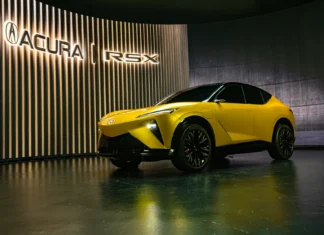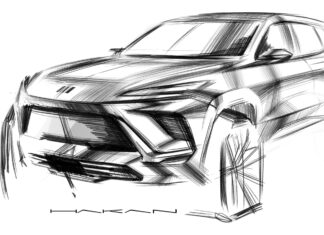The first subcompact SUV from Jeep was designed in America but suited to meet customer needs in more than 100 countries. Built in Italy and based on the Fiat 500L, the 2016 Jeep Renegade won’t disappoint Jeep fans.

Fiat Chrysler Automobiles (FCA) says the Renegade is its first vehicle to use its new “small-wide 4×4 architecture.”
The Renegade (can you think of a better name for a Jeep?) is helping keep FCA in the black and appropriately joins the long Jeep line, which consists of the Grand Cherokee, Grand Cherokee SRT®, Compass, Patriot, Wrangler, and Wrangler Unlimited.
There are seven new exterior colors. Some call the Renegade “cute,” although there’s no mistaking it for anything but a Jeep, thanks largely to the traditional Jeep grille.
Driving it is much like driving a nimble car, although a driver sits higher than in a car. It’s easy to dart in and out of traffic or to squeeze into a tight parking spot.

The Renegade comes with front-drive or with two all-new four-wheel drive (4WD) systems. It’s offered in Sport, Latitude, Limited and Trailhawk models with either a 1.4-liter turbocharged four-cylinder engine with 160 horsepower or a 2.4-liter 180-horsepower four-cylinder.
I found that the 2.4L provides good passing on highways and quick entrances into fast freeway traffic. I didn’t test the Renegade 1.4L turbo, but it has more torque (184 pound-feet) than the 2.4 (175 pound-feet). The 1.4L’s turbo boost pressure is said to provide a broad torque curve for a variety of conditions.
Towing capability with the 2.4L and tow package is up to 2,000 pounds.
The 1.4L engine comes with a 6-speed manual transmission, while the 2.4 is hooked to a new, responsive 9-speed automatic.
List prices range from $17,995 to $26,995. I tested the top-line Limited with the 2.4L engine, 4WD and the automatic transmission, which has an easily used manual shift feature via the console gear selector.

Limited standard features include heated front seats and steering wheel, power driver’s seat, automatic headlights and rain-sensing wipers.
Estimated highway fuel economy is a strong point of all Renegades, although they top 3,000 pounds. City economy ranges from 21-24 miles per gallon, while all get 31 mpg on the highway — except for the 2.4L with the automatic and 4WD. That combination provides an estimated 29 mpg on highways — and 21 mpg in the city.
The 1.4L turbo engine calls for premium gasoline, but the larger 2.4L four-cylinder only needs regular-grade fuel.
New features for 2016 include a Beats premium audio system, rain-sensing wipers, Uconnect Access, Uconnect touchscreen radios, and the segment’s largest full-color instrument cluster.
There are up to 70 available safety and security features, including blind-spot monitoring, rear cross-path detection, ParkView rear backup camera, electronic stability control, electronic roll mitigation and seven standard air bags.

It takes extra effort to enter the Renegade because of its high floor. Its boxy shape allows comfortable seating for four adults, although legroom is tight for a tall passenger behind a tall driver. The stiff center of the backseat is best occupied by a fold-down armrest that contains two cupholders.
Two available lightweight honeycomb fiberglass polyurethane roof panels provide an open-air experience and can be easily stowed.
Cargo capacity is moderate with the rear seat in its normal position but flipping the split rear seatbacks forward significantly enlarges it.
Front seats are supportive in curves, and the quiet, nicely trimmed interior looks snazzy. There is a fair amount of plastic, but it doesn’t look cheap.
Climate controls are large, although front cupholders are set rather low in the console. Front door storage bins aren’t large and rear ones are just for beverage containers. But there’s a deep storage bin with a cover under the sliding front armrest.

My test Renegade’s backlit gauges could be quickly read in sunlight, and the touchscreen was easy to use. The power rear windows roll all the way down, although the position of power window controls in the driver’s door occasionally caused me to mistakenly lower the back windows instead of the front ones.
Steering with the tilt/telescopic wheel was nicely geared for on- and off-road use, and handling around curves was stable, thanks to such things as a well-designed fully independent suspension, electronic stability control, electronic roll mitigation, all-speed traction control and 55-series tires on 18-inch aluminum wheels.
The brake pedal had a linear action and controlled four-wheel anti-lock disc brakes with good stopping power.
However, the Limited’s ride got bouncy on certain freeway pavement, partly because of the Renegade’s fairly short wheelbase.

The Trailhawk version is for those who want to do some serious off-road driving. Its items include a 20:1 crawl ratio, exclusive ‘rock’ mode, increased ride height for 8.7 inches of ground clearance, skid plates, 17-inch wheels with on- and off-road tires and up to 19 inches of water fording capability.
I don’t recommend the Trailhawk for folks who aren’t into tough off-road use because it’s not as on-road friendly as other Renegade versions.
It seems that Fiat Chrysler now has all its Jeep bases covered with the Renegade. However, a Jeep pickup truck may not be too far off.
 On the TFLcar scale of:
On the TFLcar scale of:- Buy it!
- Lease it!
- Rent it!
- … or Forget it!
I give the 2016 Jeep Renegade a ‘Buy it!‘ rating given its handy size, secure handling, strong fuel economy, and roomy cargo area with the rear seatbacks folded. Some minor dings for its high step-up height, occasional bouncy ride, and limited cargo area when the rear seatbacks are upright.
Watch the Jeep Renegade Trailhawk tackle a challenging off-road course on this episode of TFLcar Ruts & Guts. Can Nathan negotiate the steep declines, large rocks, and logs without getting stuck?
Read more of Dan’s reviews at DanJedlicka.com






 On the TFLcar scale of:
On the TFLcar scale of:


















































 On the TFLcar scale of:
On the TFLcar scale of:














































































